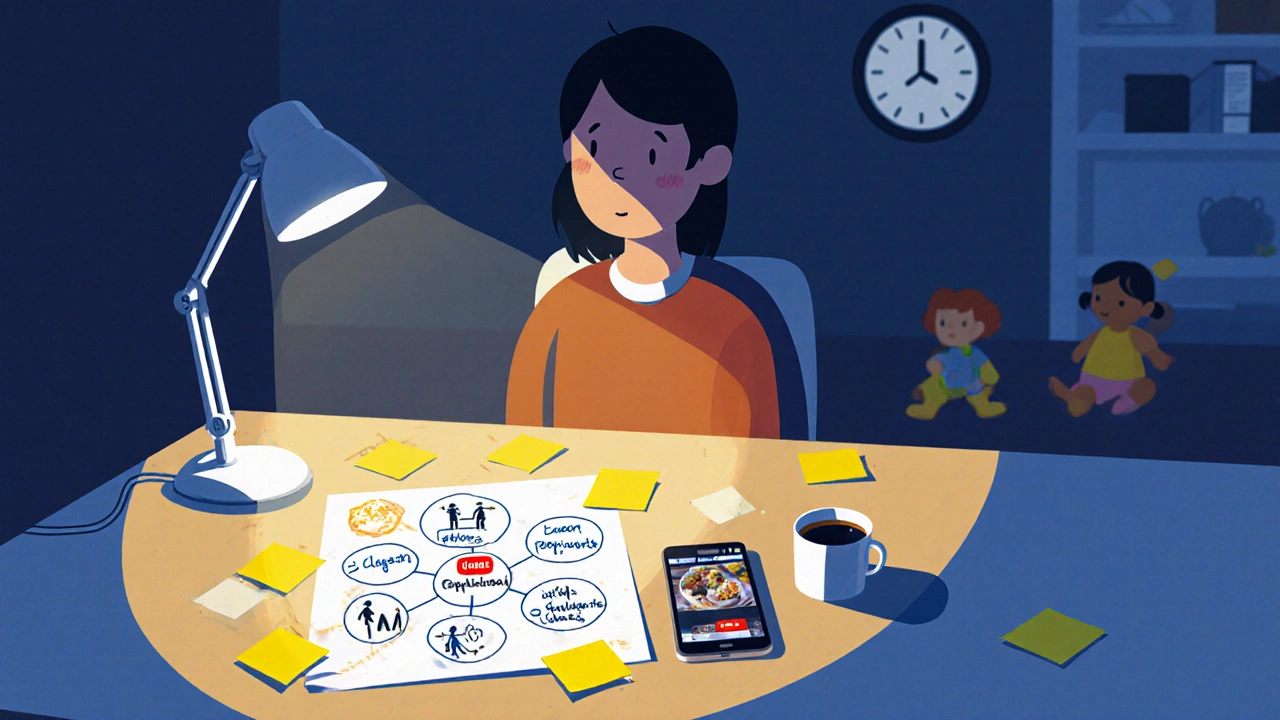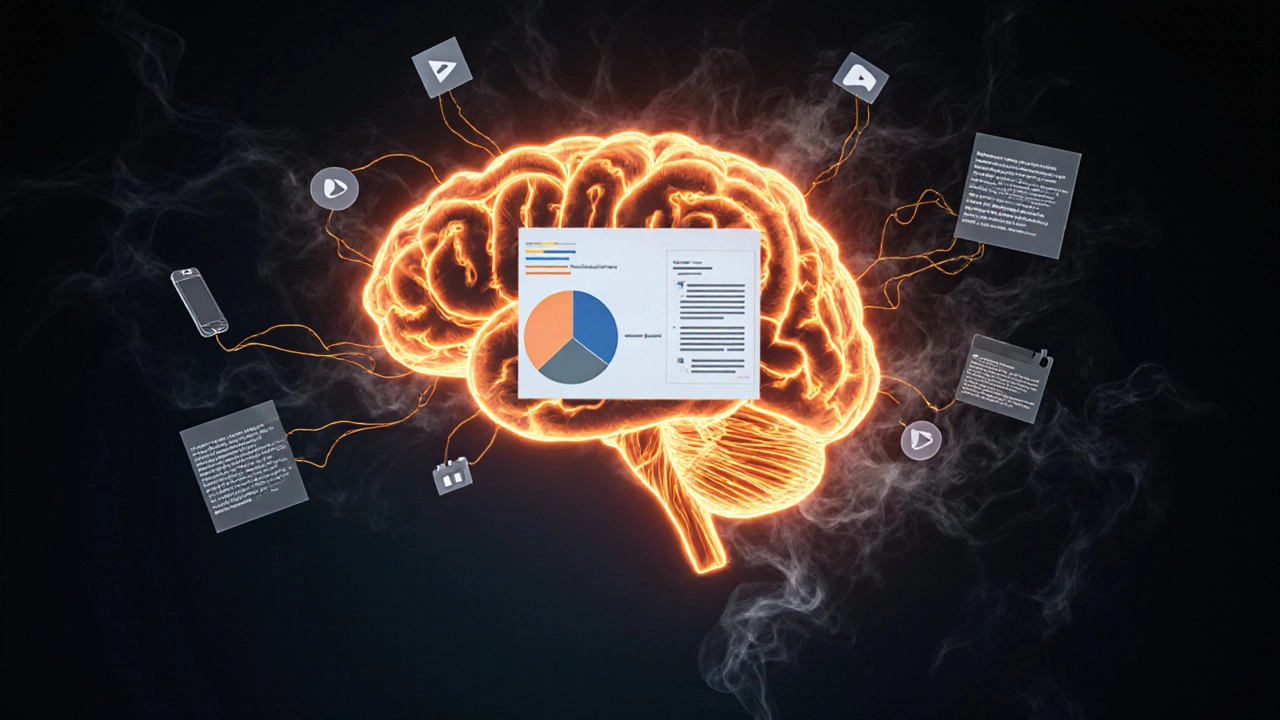Adult Learning Style Quiz
Find Your Primary Learning Style
Based on research showing 68% of adults prefer visual learning, this quick assessment reveals your dominant learning style.
Most adults don’t learn the way they did in school. By the time someone hits their late 20s or 30s, their brain has adapted to how they actually absorb information in real life - not how a textbook says they should. So when you ask, what is the most common learning style for adults? The answer isn’t a single style. But if you had to pick the one that shows up most often in workplaces, online courses, and community classes, it’s visual learning.
Why Visual Learning Dominates Adult Education
Visual learning means understanding things through images, diagrams, charts, videos, and spatial organization. It’s not about being "artsy." It’s about how the adult brain processes information efficiently after years of juggling work, family, and responsibilities.
A 2023 study from the University of Dublin’s Centre for Adult Learning tracked over 1,200 adult learners in online and evening classes. Nearly 68% of participants reported that they remembered information best when it was presented visually - like a flowchart explaining tax deductions, a video demo of software tools, or a color-coded calendar for study schedules. These weren’t students. These were nurses updating certifications, single parents taking GED prep, and factory workers learning new machinery.
Why does this work? Adults don’t have time to reread paragraphs. They need to see the structure fast. A mind map showing how to file a VAT return is faster than reading a 10-page guide. A diagram of the human circulatory system sticks better than a list of organs. The brain treats visual cues like shortcuts - and adults are wired to take shortcuts.
What About Auditory and Kinesthetic Learning?
Some adults do learn best by listening. Podcasts, lectures, and group discussions work well for them. But these are often supplemental. You’ll find more adults using audio as a backup - playing a recorded lesson while commuting, for example - than relying on it as their primary method.
Kinesthetic learning - learning by doing - is powerful too. Hands-on workshops, simulations, and role-playing are highly effective. But they’re harder to scale. Not every adult can attend a lab session or a cooking class. Visual tools, on the other hand, can be paused, rewound, and viewed on a phone during lunch break.
One mechanic in Cork told me he learned engine diagnostics by watching YouTube videos first, then practicing on his own car. He didn’t read the manual until after he’d seen the problem in action. That’s visual-first learning. The doing came after the seeing.
Adults Don’t Stick to One Style - But They Prefer One
There’s a myth that people have one fixed learning style. That’s outdated. Adults mix methods constantly. But they do have a go-to. Think of it like driving: you use both hands, check mirrors, and listen to the radio - but you’re still right-handed.
When researchers asked adult learners to rate their preferred method on a scale of 1 to 10, visual consistently scored highest - even among people who said they "liked to talk things through." The reason? Visuals reduce cognitive load. When you’re tired, stressed, or learning something complex like budgeting or coding, your brain doesn’t want to decode long sentences. It wants to see the pattern.
Even in corporate training, companies that switched from text-heavy manuals to interactive infographics saw completion rates jump by 42%. That’s not because employees suddenly became more motivated. It’s because the material matched how their brains already worked.

How to Use Visual Learning in Real Life
If you’re an adult learner, here’s how to lean into visual learning without spending hours making Pinterest boards:
- Use color-coded notes. Highlight key terms in one color, steps in another. Your brain remembers patterns better than lists.
- Watch short videos before reading. Find a 5-minute YouTube explainer on your topic. Then read the article. You’ll understand 3x faster.
- Draw simple diagrams. Even stick figures help. Sketch how a loan repayment works, or how a marketing funnel flows. You don’t need to be good at art - you just need to connect ideas.
- Use apps like Canva or Lucidchart to turn text into visuals. Many free templates exist for timelines, mind maps, and comparison charts.
- Ask for visuals. If you’re taking a course and everything is text, say: "Can you share a diagram or summary chart?" Most educators will do it.
One woman in Galway, who was learning Spanish while working night shifts, used flashcards with images instead of translations. She didn’t memorize "gato" - she remembered the picture of a cat. Within three months, she was holding basic conversations. She didn’t study grammar first. She started with pictures.
What Doesn’t Work for Adult Learners
Text-heavy PDFs. Long lectures without visuals. Pages of bullet points with no context. These are the death of adult learning.
Adults aren’t lazy. They’re time-poor. If you give them 500 words on tax credits, they’ll skim. If you give them a flowchart showing income brackets and deductions with color-coded boxes, they’ll actually use it.
And don’t assume that because someone is "tech-savvy," they prefer digital tools. Many adults avoid apps that feel like school. They want simplicity - not more complexity. A clear image on a phone screen beats a fancy learning platform with 10 buttons.

Real-World Examples That Work
Here’s what’s working right now in adult education:
- Comptia A+ prep courses use animated diagrams of hardware components - not just specs.
- Adult literacy programs in Dublin pair photos of daily objects with words: "milk," "bus," "doctor." No phonics drills first.
- Financial literacy workshops show graphs of compound interest over time - not formulas.
- Online cooking classes show the texture of dough, the color of seared meat - not just ingredient lists.
These aren’t fancy. They’re simple. And that’s why they work.
Final Thought: It’s Not About Labels - It’s About Clarity
The question isn’t "What’s your learning style?" It’s "What helps you understand faster?"
For most adults, the answer is visual. Not because it’s trendy. Not because someone told them to. But because it cuts through the noise. In a world full of distractions, visuals give clarity. They turn confusion into something you can see - and then, finally, understand.
If you’re designing a course, helping a friend learn, or studying yourself - start with a picture. Then add words. Not the other way around.
Is visual learning the only effective style for adults?
No, visual learning isn’t the only effective style, but it’s the most common. Many adults combine visual methods with listening or hands-on practice. However, when forced to choose one, visual consistently ranks highest in studies because it reduces mental effort and fits into busy schedules.
Can adults change their learning style?
Yes, adults can develop stronger skills in other learning styles, but it takes effort. Most people naturally lean toward what’s easiest. Instead of trying to force a new style, it’s more effective to adapt materials to your preferred method. For example, if you’re auditory, turn written notes into voice memos. You’re not changing your style - you’re working with it.
Do older adults learn differently than younger adults?
Not in terms of learning style preference. Research shows that adults aged 30 to 70 all benefit most from visual tools. Older adults may need larger text or slower video playback, but the core preference for images, charts, and diagrams stays consistent. The difference is in delivery, not in how the brain processes information.
Why do schools still teach using text-heavy methods?
Traditional education systems were built for standardized testing and large classrooms, not individual learning preferences. Text is cheap, easy to print, and simple to grade. But adult education is different - it’s voluntary, time-limited, and goal-driven. That’s why adult learners respond better to visuals: they’re solving real problems, not passing exams.
What if I don’t like visuals? Should I force myself to use them?
No. If you learn better by listening or doing, stick with what works. The goal isn’t to fit into a mold - it’s to get results. But don’t ignore visuals completely. Even if you’re auditory, try pairing a podcast with a simple sketch. You might be surprised how much it helps your memory. Small changes, not big overhauls, are what make learning stick.
